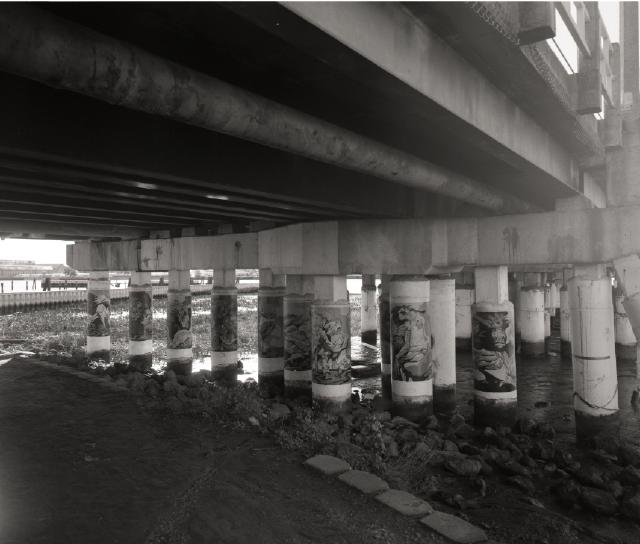Darkroom
PC-512 Borax Developer
[Last edit: Corrected single quote literal in link. Added note on 1 year partially used Part A stock. Tabulated development times and temperatures. ]
This developer was formulated by Karl Matthias as a two part, single use solution with good shelf life and minimal speed loss. Part A contains the developing agents (phenidone and ascorbic acid (Vitamin C)) dissolved in propylene glycol, and Part B is a solution of Borax in water (ideally purified or distilled). Dissolving the ascorbic acid in propylene glycol avoids the risk of the Fenton reaction with water containing metallic ions.
The two parts are mixed at a ratio of 1:50 A:B, which is conveniently 6ml of Part A added to 300ml or part B. A 100ml stock solution of Part A gives 15-16 135-36 or 120 rolls or equivalent area. Part B is easily made up in advance or as required.
Mixing
Part A
Use a glass or stainless steel mixing vessel. Dissolve in the order given.
80ml propylene glycol at 80 degrees C.
12g ascorbic acid (vitamin C)
0.5g phenidone
Cool and top up to 100ml with propylene glycol.
Part B
800ml distilled or purified water at room temperature or slightly warmed.
21.7g Borax
Water to 1000ml.
In use
Mix 1 part A to 50 parts B just before use. Typically 6ml part A to 300ml part B. Use as a one-shot developer.
Testing
All these negatives were processed using a Jobo CPE2 Plus with either 1500 or 2500 series tanks at 21 C. A 5 minute pre-wash was used at process temperature, then the developer, water rinse for one minute, then fixing in TF-4 for 6 minutes. Wash using 4 changes of water at 1, 2, 4, and 8 minute rinses. 15 seconds included at the end of each step for draining and refilling. These are unadjusted scans to try and give the best feel for highlight and shadow behavior within the limitations of the web.
HP5 Plus, 4x5 sheet film, Will Travel with 90mm f8 Super-Angulon, monopod, shutter speeds between 1/15 and 1/125 second.

Troll illustrations under the Mare Island Causeway, Vallejo, California.

Vallejo Marina, California.
Delta 400, 120 roll film, Mamiya 6, 75mm lens, tripod.

Vallejo, California.
These times are slightly longer than others have reported (see the thread at Photrio ) This may mean that my Borax is mostly in the ‘decahydrate’ form, and the resulting solution is not as alkaline as expected. Pre-washing is the method recommended by Jobo, and usually offsets any increase in density from rotary processing.
My times, E.I. at box speed, Jobo processor as noted above:
- HP5+ 9m 15s
- Delta 400 8m 15s
Tabulated times, temperature and film speed, Inversion agitation unless otherwise noted.
| Film | E.I. | Temp. C. | Time | Notes |
|---|---|---|---|---|
| Delta 100 | 100 | 20 | 6m 45s | |
| Delta 100 | 100 | 20 | 7m 0s | |
| Delta 400 | 400 | 21 | 8m 15s | Jobo CPE2, 5 min pre-wash, rotary |
| Tri-X 400 | 400 | 20 | 7m 0s | |
| Kentmere 400 | 400 | 20 | 8m 40s | |
| HP5+ | 400 | 21 | 9m 15s | 4x5 sheet, Jobo CPE2, 5 min pre-wash, rotary |
Times taken from the original article, the Photrio thread, and personal experiment. Note that times and exposure may vary depending on personal preference for contrast and density. Run your own tests. In general, starting times for experiment seem to be around those for XTOL. 35mm or roll film unless noted.
One year in (February 2024)
Part A (Phenidone and Vitamin C in propylene glycol) seems fine, with no observed degradation. The solution was kept in a 100ml orange glass chemical bottle, tightly capped, and stored in a cupboard. Room temperature in the past year would have ranged from 65F. to around 85F. (18C. to 29C.) as this is not an actively heated or cooled space. I have used about 80% of the part A stock, and made several 1 liter batches of part B.
So I feel the keeping qualities are very respectable.